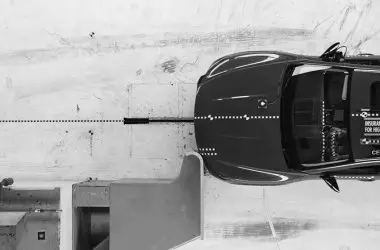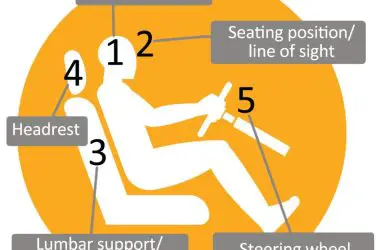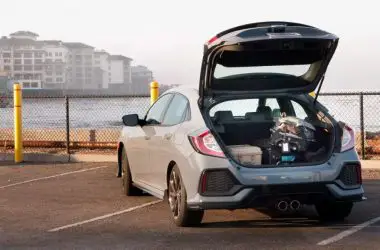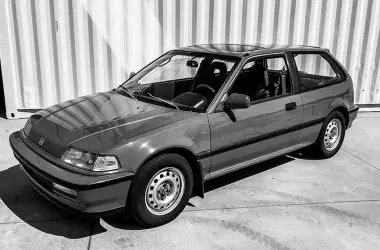An individual driver’s habits behind the wheel can greatly impact the fuel efficiency of their vehicle. Aggressive maneuvers like speeding, rapid acceleration, and hard braking burn through fuel much more quickly than driving smoothly. However, smart driving techniques like cruise control usage, route planning, and regular maintenance help maximize MPG and minimize fuel costs. This article will analyze how specific driving habits relate to fuel efficiency, offering actionable tips for drivers looking to improve their gas mileage.
Aggressive Driving
Aggressive driving involves behaviors like speeding, rapid acceleration, and hard braking that waste gas and lower fuel efficiency. It is defined as operating a vehicle in a selfish, pushy, or impatient manner, often unsafely, putting other drivers at risk.
Aggressive driving habits like sudden acceleration and braking drastically reduce gas mileage. Speeding causes an exponential increase in wind resistance and fuel consumption – every 5 mph over 50 mph reduces fuel economy by 7% (https://www.yatis.io/impact-of-aggressive-driving-on-fuel-efficiency-with-obd/). Hard braking wastes the energy and fuel used for acceleration.
Studies show aggressive driving can lower MPG by 15-30%. It’s estimated that easing up on aggressive driving could improve fuel efficiency nationwide by 5-10%, saving billions of gallons of gas per year (https://interviewprep.org/driver-supervisor-interview-questions/).
Speeding
Speeding, or driving over the speed limit, has a significant impact on fuel efficiency. As speed increases, wind resistance increases exponentially. According to the U.S. Department of Energy, wind resistance or “drag” increases four times when speed doubles from 50 to 100 km/h. This extra drag forces the engine to work harder to overcome it, which burns more fuel (Fleet News).
Studies show that driving 10-15 mph over the speed limit can reduce fuel economy by 15% to 30% (eDriving). Maintaining posted speed limits is one of the easiest ways to improve fuel efficiency and save money on gas. Slowing down helps reduce drag, engine strain, and unnecessary fuel burn.
Rapid Acceleration
Accelerating rapidly from a stop or while driving guzzles gas, as it requires a lot more fuel to power the engine. Studies have shown that aggressive acceleration can reduce fuel economy by 15% to 30% on the highway and 10% to 40% in city traffic (Source: Honda and MAK Lubricants launch co-branded two-wheeler engine oil). Instead of flooring the accelerator, drivers should accelerate gradually and steadily. This allows the vehicle to gain speed in the most fuel-efficient manner.
The key is to be light on the gas pedal and smoothly increase speed. Drivers should avoid revving the engine at high RPMs. By being patient and not racing other cars from stop lights or weaving in and out of traffic, considerable gas savings can be achieved.
Hard Braking
Hard braking wastes a significant amount of kinetic energy and fuel (https://www.encoreprotection.com/blog/keep-fleets-drivers-happy/). When drivers brake hard and fast, the brakes have to work extra hard to slow the vehicle down quickly. This aggressive braking converts the vehicle’s kinetic energy into heat, which is released into the air. Essentially, the kinetic energy is wasted rather than conserved.
Studies show that smoothing out braking can increase fuel efficiency by 5-10%. Drivers should aim for slow, gradual braking whenever safely possible. This gives the brakes more time to work and prevents wasted energy. The key is to anticipate stops, ease onto the brakes early, and brake gently. This driving habit allows the vehicle to slowly coast to a stop while conserving momentum.
Fleet managers can encourage smooth braking by monitoring driving habits and giving feedback. Drivers with high rates of hard braking waste substantially more fuel. Training on braking techniques can help drivers brake appropriately. With practice, smooth braking becomes a habit and boosts fuel efficiency.
Idling
Idling gets 0 miles per gallon (MPG). When a vehicle is idling it is still consuming fuel but not going anywhere. This is an incredibly inefficient use of gas. According to a Quora source, idling wastes an estimated 6 million gallons of fuel per day just in the United States. That adds up to over 2 billion gallons wasted annually from idling alone. Reducing idling time by even a few minutes per day can lead to noticeable fuel savings over time.
Cruise Control Improves Fuel Efficiency
Using cruise control can help maintain a constant speed and improve fuel efficiency. According to a study by Animashaun Umar, engaging cruise control can improve fuel efficiency by 7-14%. Cruise control works by taking over the throttle of the car, allowing the engine and transmission to find an optimal combination for efficiency at the set speed.
Additional studies have confirmed these findings. One study by Oak Ridge National Laboratory found that using cruise control improves highway fuel economy by an average of 3-4 mpg. This equates to an improvement around 7% compared to manually controlling speed.
By maintaining a steady speed and reducing variations in throttle input, cruise control allows the engine to operate more efficiently. The resulting improvement in fuel economy can provide significant savings over time for drivers who regularly use cruise control.
Route Planning
According to How to Choose the Most Fuel Efficient Route Planner, route planning is one of the easiest ways to gain fuel efficiency. Avoiding unnecessary stops, turns, hills and traffic can significantly reduce fuel consumption. When planning a trip, try to map the most direct route that avoids congestion and minimizes stops. Apps like Google Maps and Waze use real-time traffic data and have settings to optimize routes for fuel efficiency.
As noted in Fuel Efficient Route Planning on Google Maps (Guide 2024), Google Maps provides an option to “prefer fuel efficient routes” which calculates routes to minimize fuel consumption. This accounts for factors like road grade and traffic congestion. Enabling this setting and letting the app optimize your route is an easy way to improve fuel efficiency. Avoid shortcuts that add extra turns or hills when possible. Streamlining each trip’s route can yield surprising fuel savings over time.
Regular Maintenance
Performing regular maintenance on your vehicle is one of the best ways to maintain good fuel efficiency. Seemingly minor issues like underinflated tires, dirty air filters, or old spark plugs can noticeably reduce your miles per gallon.
Checking your tire pressure frequently and inflating them to the manufacturer’s recommended level can improve your MPG by around 3.3% (source). Underinflated tires create more rolling resistance with the road, forcing your engine to work harder and use more fuel.
Replacing a clogged air filter can improve MPG by as much as 10% as it allows air to flow freely into the engine (source). Air filters prevent debris and dirt from entering the engine, but get clogged over time.
Changing your vehicle’s oil and oil filter according to the manufacturer’s recommendations can provide a 1-2% boost in MPG (source). Fresh oil lubricates the engine better and reduces friction.
Replacing old spark plugs and wires can increase MPG by as much as 4% (source). Worn spark plugs can cause your engine to misfire, operate inefficiently, and waste gas.
In short, keeping your vehicle well-maintained per the manufacturer’s schedule is one of the easiest and most effective ways to optimize MPG and fuel efficiency.
Conclusion
In summary, there are several driving habits that can significantly impact your vehicle’s fuel efficiency and cost savings:
– Aggressive driving with speeding, rapid acceleration, and hard braking wastes gas and lowers MPG. Maintain the speed limit, accelerate gradually, and brake early and gently.
– Idling for more than 10 seconds uses more fuel than restarting your engine. Turn off your car if stopped for more than 30 seconds.
– Using cruise control on highways helps maintain a constant speed and improve MPG. But don’t use it on wet or icy roads.
– Planning your route in advance and combining multiple errands into one trip reduces unnecessary driving and saves gas.
– Following the manufacturer’s maintenance schedule improves performance and fuel economy. Replace filters, fluids, spark plugs, and worn parts as needed.
By adopting fuel-efficient driving habits such as avoiding aggressive maneuvers, minimizing idling, using cruise control prudently, trip planning, and staying on top of maintenance, you can maximize your MPG, extend the life of your vehicle, and save money at the pump.





